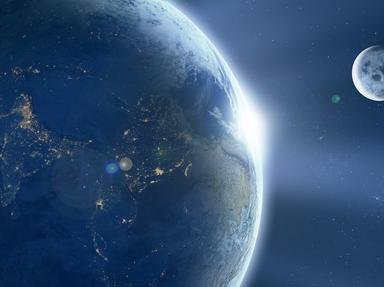
10 Questions: Moons of our Solar System Match Quiz | Sci / Tech
This quiz asks you to match moons in our solar system with the planets or dwarf planets that they orbit. I hope you enjoy it. I have certainly learned a few things in writing it.
A matching quiz
by mazza47.
Estimated time: 3 mins.
- Home
- »
- Quizzes
- »
- Science Trivia
- »
- Our Solar System
- »
- Moons